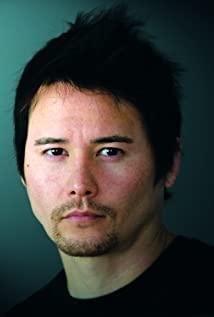"Devilman" is very short, as short as one night to finish. There are 10 episodes in total, and each episode is 25 minutes long. The beginning and end of the film are removed, but it is only more than 200 minutes. You can watch it in the time of a full-length movie.
As a viewer who has not come into contact with the original "Devilman" comics before, when I saw that the animated protagonist Fumei became a demon, maintained a human heart and possessed the physical ability of a demon, my first reaction was: "Oh, Another superman animation." I thought that the next plot would definitely be that the demons fight monsters and upgrade, save the world, marry Bai Fumei, and reach the pinnacle of life.
But soon, Yuasa Masaki, or the original author Nagai Hao slapped me hard in the face. Unexpectedly, this animation can go so far on the road of satirizing human nature, metaphorizing politics, bloody darkness, and heavy taste 18 bans, so mean and unfeeling, as if it doesn't care about anyone's vision.
The above feelings, in simple words, is that this animation is really bursting and good-looking!
The "Devilman" comic was created by Nagai Hao in 1972. The plot tells the story of the demon's return to the world, and the protagonist's incarnation of the devil to fight against the devil. The level of bloody violence in the entire comic was unprecedented at the time, and was considered to be one of the firsts of bloody and violent comics.
However, because of the dark and rebellious world view contained in the comics, as well as the extreme thoughts such as confronting human nature and exposing the deepest dark side and terror of human beings, people have deep thoughts on human beings, nature and society, and influenced many later works of art .
Therefore, Nagai Hao's "Devil Man", Tezuka Osamu's "Strange Doctor Black Jack" and Ikeda Riyoko's "Rose of Versailles" together are called three immortal masterpieces in the 1970s. acknowledged masterpiece.
In the new version of "Devil Man" after the adaptation, it is Yuasa Masaaki who has to be mentioned as the supervisor. Exaggerated painting style, amazing imagination, distorted lines, and rich colors make Yuasa Masaki a godlike creator.
In this "Devil Man", Yuasa Masaki once again brought his exaggerated style of painting to the fullest, which is also due to the erotic, violent, and bloody elements in the original work. The two combine to create such an insane animation.
For example, in the animation, the Sabbath party held to summon demons is full of eccentricity, violence and drugs. The pictures are full of bare chests and lower bodies, intercourse of the same sex or the opposite sex, and the appearance of demons brings bloody scenes of severed hands, broken feet, and headshots. It's really yellow and violent, and only platforms like Netflix can show it!
However, as I said at the beginning, I really didn't know anything about this comic until I saw this "Demon Man". So what really attracted me was a line in the animation:
"Even if humans try to move, our physical fitness is still not as good as that of cats, dogs, or even birds."
So what's the point of running?
As a person who is not good at sports and is not very keen on sports, I often feel this way. Speaking of running, humans really can't outrun a cat. It's obvious, like I'll never be able to catch my cat unless it wants to.
This line is crucial because the story revolves around several members of the campus track team. Among them are the protagonist Akira Fudo, the daughter of his sojourn family, Miki Kimura, as well as two important supporting characters, Miko and the talented high school track and field athlete who forgot her name.
They all stand out for their performance on the track, or for their constant striving to run faster. To this end, they did not hesitate to turn themselves into demons.
This setting is very interesting and real, and it almost expresses the dream of many people. I believe that many people have fantasized about being able to suddenly gain superhuman physical strength in those middle school days when they would run out of breath and land in the last 400 meters.
In other words, we humans are not good at running, so we can use the physical energy of demons to run faster, just like we invented cars, high-speed trains, and airplanes. It seems righteous, but he has fallen into a demon.
At the end of the animation, Miki, who ran for her life in a hurry, answered this question with her last life. The reason why she wanted to run was because "I like it". In the same way, the reason why people are human and the reason why demons can maintain their humanity is because there are people they like to protect.
The entry point of the entire "Devil Man" is here, small and delicate. It seems insignificant, but when extended, it is the confrontation between demons and demons, the confrontation between humans and humans, satirizing human nature, exposing ugliness, and pursuing beauty.
Just like the full name of this version of "Devil Man" should be DEVILMAN crybaby, which is "Devil Man: Crybaby", the protagonist Fu Ming is the so-called crybaby. After watching the animation, we know that he has delicate emotions and can feel the sadness in the other party's heart. His cry was not for himself, but for others.
And that's what's especially important in "The Demon Man": to understand the other person, to feel the other person, whether he is a demon or a human. And selfish, psychologically distorted human beings are actually the real demons.
On the one hand, the animation exaggerates the cruel cannibalism among humans, ranging from the outbreak of war between the United States and Russia, launching nuclear bombs, to the small crowd killing Miki and dismembering her; on the other hand, the animation secretly depicts the demons Huai Meng and The beautiful love between the dead and the lilies, dedicate yourself to love.
The latter is also said to be a major change made in this adaptation.
In addition, in the comic version, there is only Akira Fudo between humans and demons, but in this animation, it is more complicated. There are both demons who are on the side of humans, and humans who are on the side of the devil.
Comparing the two, it is not difficult to see the real intention of Masaaki Yuasa: the appearance of a demon or a human is not important, what matters is your heart.
However, after watching the whole animation, what annoys me the most is the endless rap, I believe this will also be the slot of many people. On the one hand, it may be that the individual has been indifferent to this form of music from the beginning to the end, and on the other hand, it is also due to the current hip-hop farce.
But in fact, this is also Yuasa Masaki's efforts to modernize this manga. In Nagai Hao's original comics 45 years ago, there were some "banchang", that is, some underworld leaders and gangsters, in familiar words, young and dangerous.
But these "banchang" who had a sense of reality in those days no longer exist now. So Yuasa Masaki came up with a whim to replace them with rap brother. Yuasa Masaaki also said in the interview: "From a standpoint, I think Rapper is a modern bard. Only they can speak out and criticize positively."
At the same time, the social networking sites, smartphones, bullet screens, online postings, messages and other elements that appear in the animation are also Yuasa Masaki's efforts to modernize this manga. And all of this is nothing more than to convey the impact of this comic to the current audience.
In any case, Yuasa Masaki's adaptation this time was particularly successful. Whether it is the picture or the play, the same level has been maintained. Not only worthy of his own name, but also worthy of the inheritance of "Devil Man", which is called a masterpiece.
View more about Devilman: Crybaby reviews










